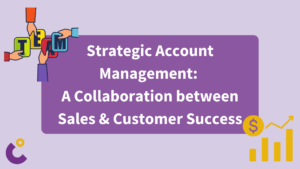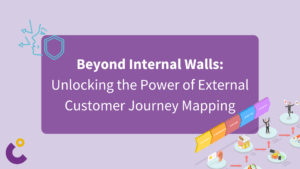
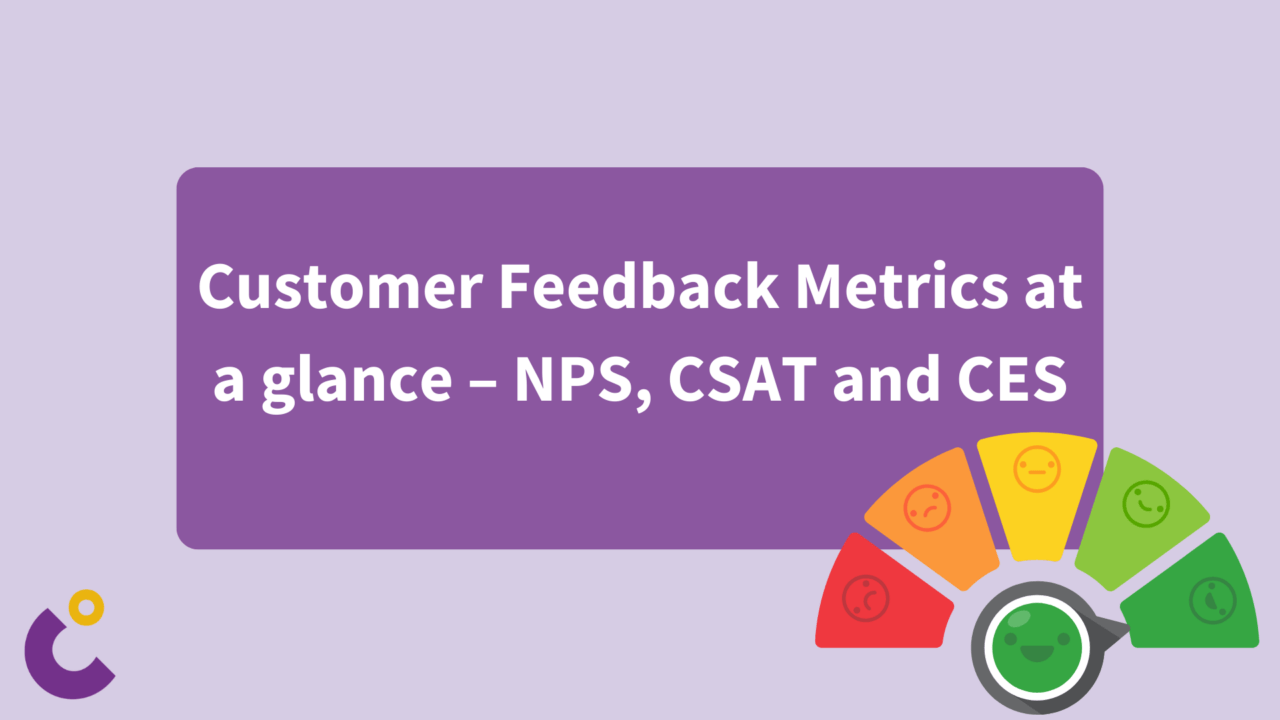
Elevating Customer Experience with the right Feedback Metric: NPS, CSAT, and CES
Customer feedback is a critical component of driving customer loyalty and business success. But with so many feedback metrics available, how do you choose the right one for your business? In this article, we’ll explore the three most common feedback metrics: Net Promoter Score (NPS), Customer Satisfaction (CSAT), and Customer Effort Score (CES).
Net Promoter Score (NPS):
NPS measures customer loyalty by asking a simple question: “On a scale of 0-10, how likely are you to recommend our product/service to a friend or colleague?” Customers are then categorized into Promoters (score 9-10), Passives (score 7-8), or Detractors (score 0-6). The NPS is calculated by subtracting the percentage of Detractors from the percentage of Promoters.
Customer Satisfaction (CSAT):
CSAT measures how satisfied customers are with a specific product or service experience. It asks a question such as “How satisfied are you with the service you received?” Customers rate their satisfaction on a scale of 1-5 or 1-10. The CSAT score is the average of all responses.
Customer Effort Score (CES):
CES measures the ease of a customer’s experience in solving a problem or completing a task. It asks a question like “How easy was it to solve your problem?” Customers rate their experience on a scale of 1-5 or 1-7. The CES score is the average of all responses.
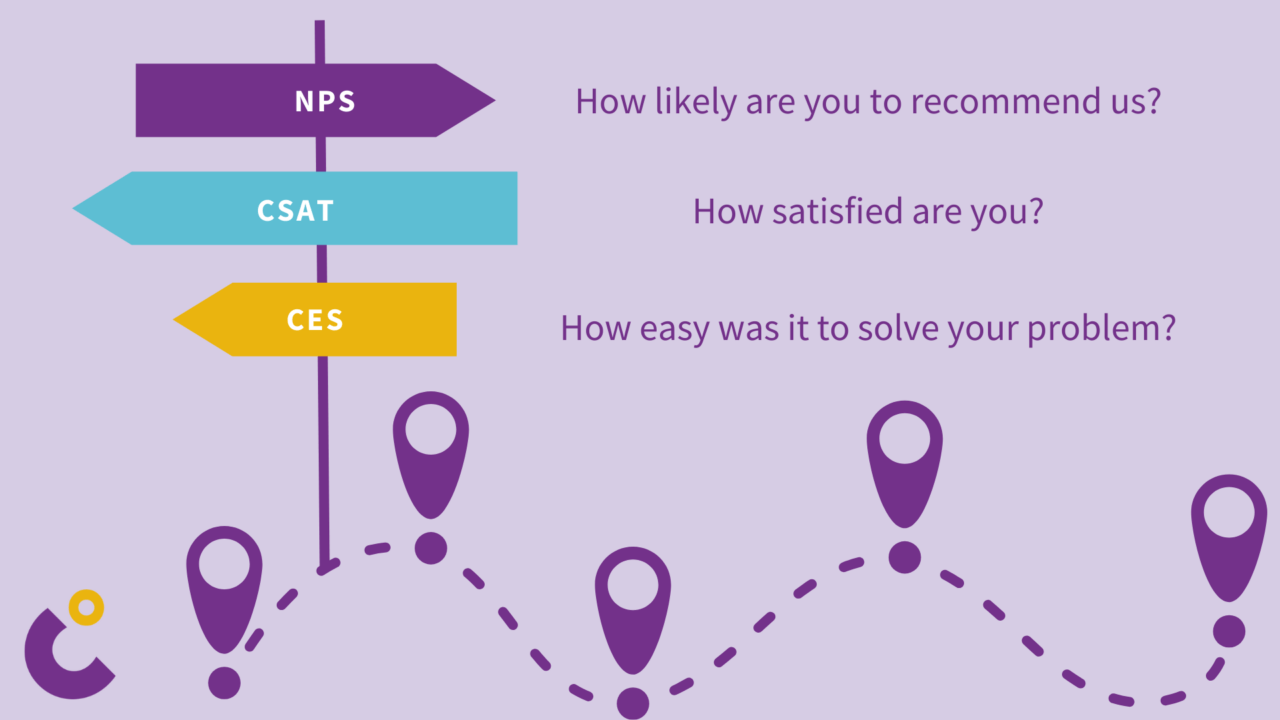
When to use which Feedback Metric?
Net Promoter Score (NPS), Customer Satisfaction (CSAT), and Customer Effort Score (CES) are three essential survey metrics that offer distinct perspectives on the customer experience. Understanding their differences can help determine which metric is best suited for specific situations.
NPS is ideal for measuring customer loyalty and identifying brand advocates. It captures customers’ likelihood to recommend and categorizes them into Promoters, Passives, or Detractors. NPS is valuable for gauging overall customer sentiment and predicting business growth and is a good fit for Relationship Surveys.
CSAT, on the other hand, measures customer satisfaction with a specific product or service experience. It provides a snapshot of customers’ contentment, allowing businesses to address specific pain points and enhance satisfaction levels. CSAT is most effective for evaluating and improving individual touchpoints or interactions and can be used for transactional surveys along the customer journey.
CES focuses on the ease of a customer’s experience when resolving a problem or completing a task. It helps identify areas where customers may face difficulties or encounter friction, enabling businesses to streamline processes and reduce customer effort. CES is particularly useful for identifying and eliminating pain points in customer journeys.
The choice of metric depends on the business objective and the specific insights needed
As summary, NPS is best suited for assessing overall customer loyalty and predicting growth potential. CSAT is valuable for measuring satisfaction with specific interactions or experiences. CES is effective in pinpointing areas of improvement to reduce customer effort. By selecting the most relevant metric, businesses can gain actionable insights and drive meaningful improvements in customer experience and satisfaction.
Measuring and Improving your Feedback Metric:
Each metric provides unique insights into the customer experience. To measure and improve these metrics, consider the following tips:
- Regularly collect feedback through surveys or other means.
- Actively listen to and analyze customer feedback.
- Use feedback to drive meaningful improvements.
- Follow up with customers to ensure their concerns are taken seriously.
Long story short… The Importance of monitoring and improving your Feedback Metric
Feedback metrics provide valuable information for driving customer satisfaction and loyalty. By monitoring these metrics, you can proactively identify areas for improvement, implement targeted solutions, and create a customer-centric culture. Ultimately, this leads to increased customer retention, positive word-of-mouth, and business growth.
As you strive to elevate your customer experience, consider leveraging NPS, CSAT, and CES to gain actionable insights and drive customer success. By prioritizing customer feedback, you can build long-term customer relationships and drive business success.
This might also interest you


Beyond Internal Walls: Unlocking the Power of External Customer Journey Mapping
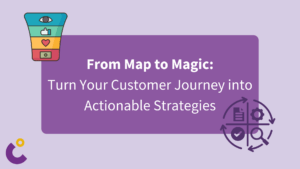
From Map to Magic: Turn Your Customer Journey into Actionable Strategies

Decode Your Customer Journey: A Step-by-Step Guide to Mapping Success

Beyond the Score: Transforming Net Promoter into a Growth Engine – Net Promoter System

Turn Your Raving Fans into a Sales Force: Using Customer Advocates as Your Reference Pipeline
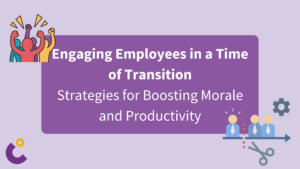
Engaging Employees in a Time of Transition: Strategies for Boosting Morale and Productivity
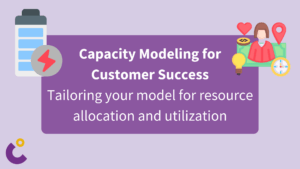
Capacity Modeling for Customer Success

Data Driven Customer Success
